

| Rearing Cryptocephalus querceti in captivity | ||
| Following our finding
of several adult C. querceti in May 2011, we decided that
it would be worth rearing through a number of larvae in
captivity, with a view to obtaining photos of the larval
stages as there is no documentation of this on the
internet. As with most Cryptocephalus beetles, pairing occurs very easily and the first pots were produced on May 29th. Female querceti are much more articulate in pot construction than C. coryli, holding the pot in the rear metatarsi and continuously turning the pot with great dexterity during the latter stages of construction. |
||
| .... | ||
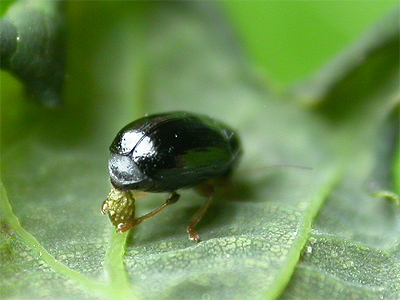 |
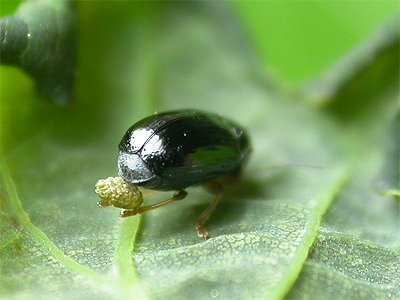 |
|
| .... | ||
| The 0.5mm long pot of C. querceti is very similar to that produced by C. labiatus. The pots of both species' are broadly oval and with the same twisted texture to the surface. But a strange difference between the two species is that the twists produced by querceti females go from left to right, whilst those produced by labiatus females go from right to left. Eggs laid on May 29th began hatching on June 11th. | ||
| .... | ||
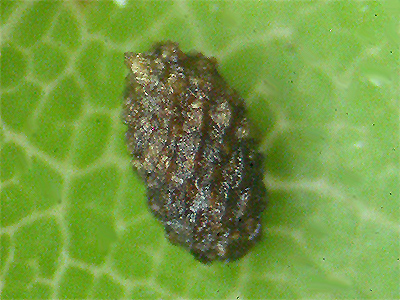 |
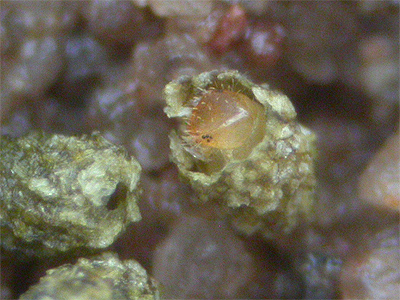 |
|
| .... | ||
| Recently hatched C. querceti larvae and pots measuring 1.5mm photographed on June 18th, exactly a week after hatching. Much of the feeding by all larvae at this stage, was either along the leaf petiole or generally confined to the base of the leaf. | ||
| .... | ||
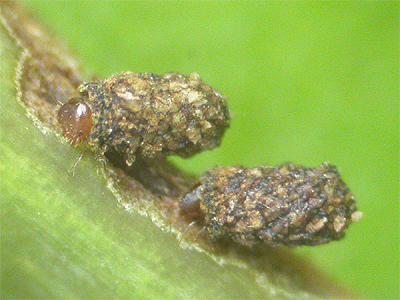 |
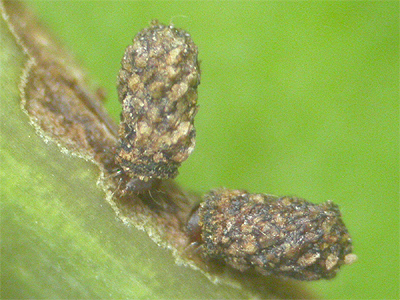 |
|
| .... | ||
| C. querceti larvae and pots photographed on July 6th 2011. The larvae are kept on damp sand, which is left to dry out before being dampened again. They develop well on a diet of fresh Oak leaves, which they graze and skeletonize. At this stage, the average pot length is 2.25mm. | ||
| .... | ||
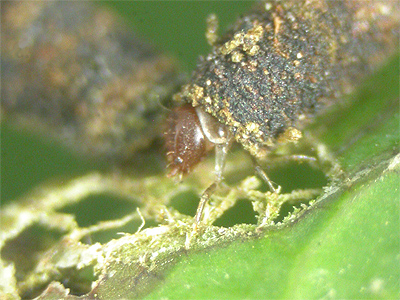 |
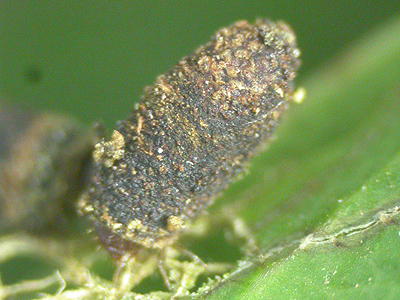 |
|
| .... | ||
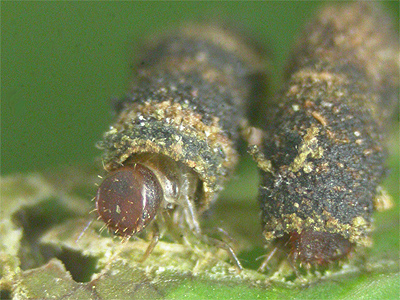 |
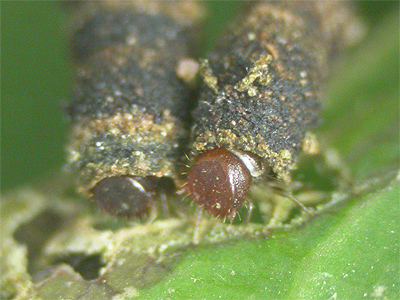 |
|
| .... | ||
| C. querceti larva, photographed July 17th. Larval growth continues on fresh Oak leaves and by this stage, the larvae measure 2.8mm. | ||
| .... | ||
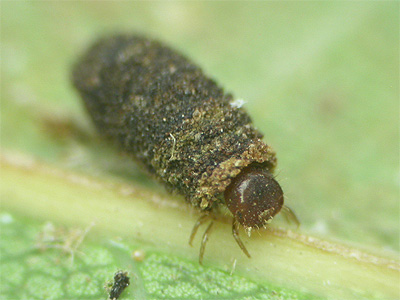 |
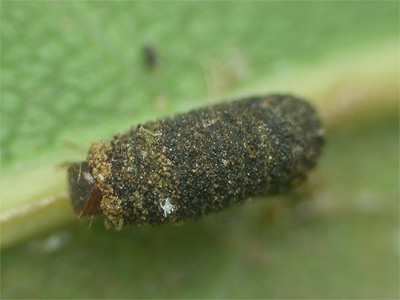 |
|
| .... | ||
| C. querceti larva, photographed August 11th. Development continues to be fast, with the average pot length now being 4mm. | ||
| .... | ||
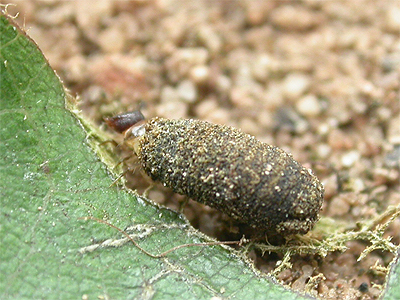 |
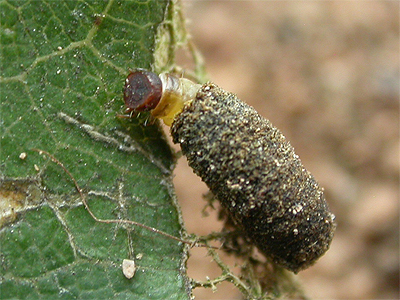 |
|
| .... | ||
| Following
what seems to be a dormant late Summer and Autumn period,
typical of all the Cryptocephalus beetles we are
rearing, the pots were transferred outside in early
January 2012, to have some weeks of cold conditions.
Following snow and a period of temperatures well below
freezing, the pots were brought back indoors and kept in
the kitchen until milder weather returned in late
February. A check revealed that pot sizes vary
considerably, with the largest measuring only 4.5mm in
length. Survival rate in C. querceti larvae seems low, based on the number of active larvae we noted on warms days at the end of February, but final success rate remains to be seen. The four photographs below, were taken on February 26th 2012 and show the largest larva and its pot. |
||
| .... | ||
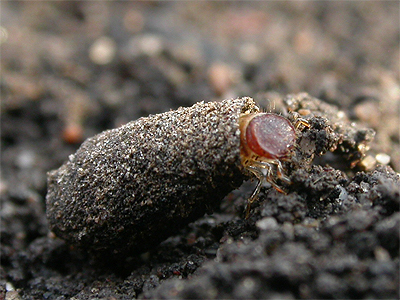 |
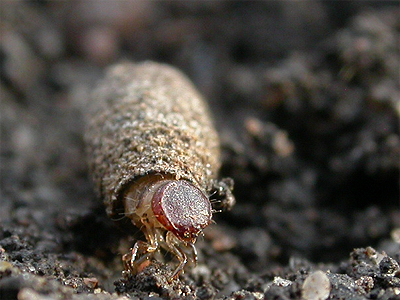 |
|
| .... | ||
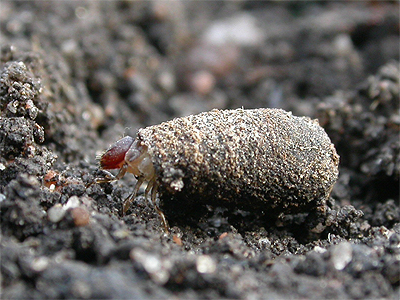 |
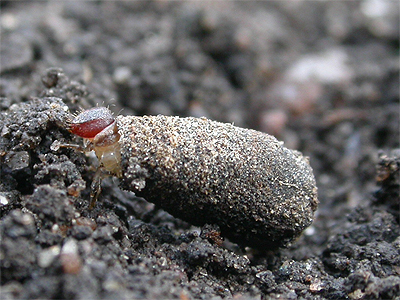 |
|
| .... | ||
| C. querceti
larvae, early May 2024. After not rearing querceti for over a decade, a
number of eggs from a female taken into captivity for several days
before later being re-released, resulted in a number of larvae. The larvae grew successfully and overwintering was completed outdoors in a brick out house and watered very occasionally. It was found that a good percentage of the larvae were still alive when checked very early in 2024, but the success rate of overwintering larvae again proved to be lower than other species of Cryptocephalus by the time milder temperatures arrived in March 2024. |
||
| .... | ||
 |
 |
|
| .... | ||
| Opened pot after emergence of the adult at the end of May 2024. Larval growth was found to take just under a year and complete by early/mid May. | ||
| .... | ||
 |
 |
|